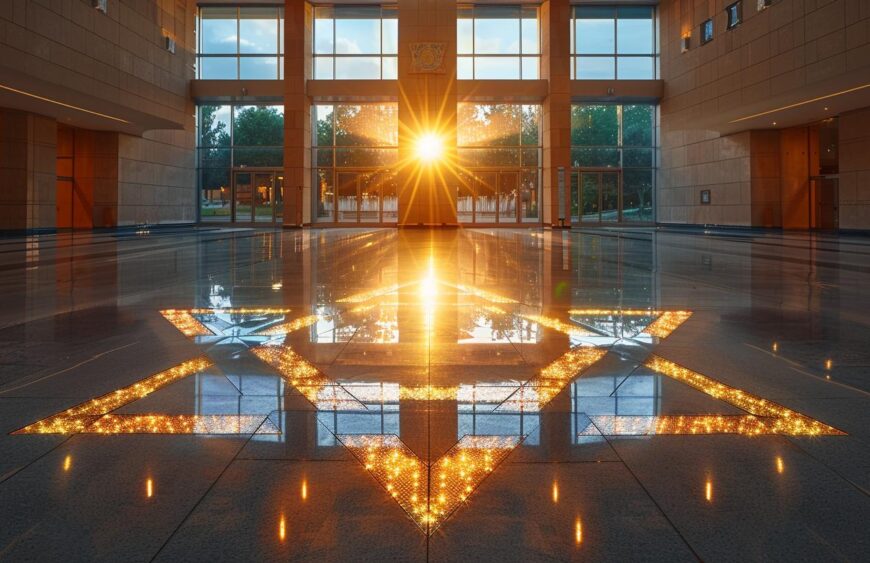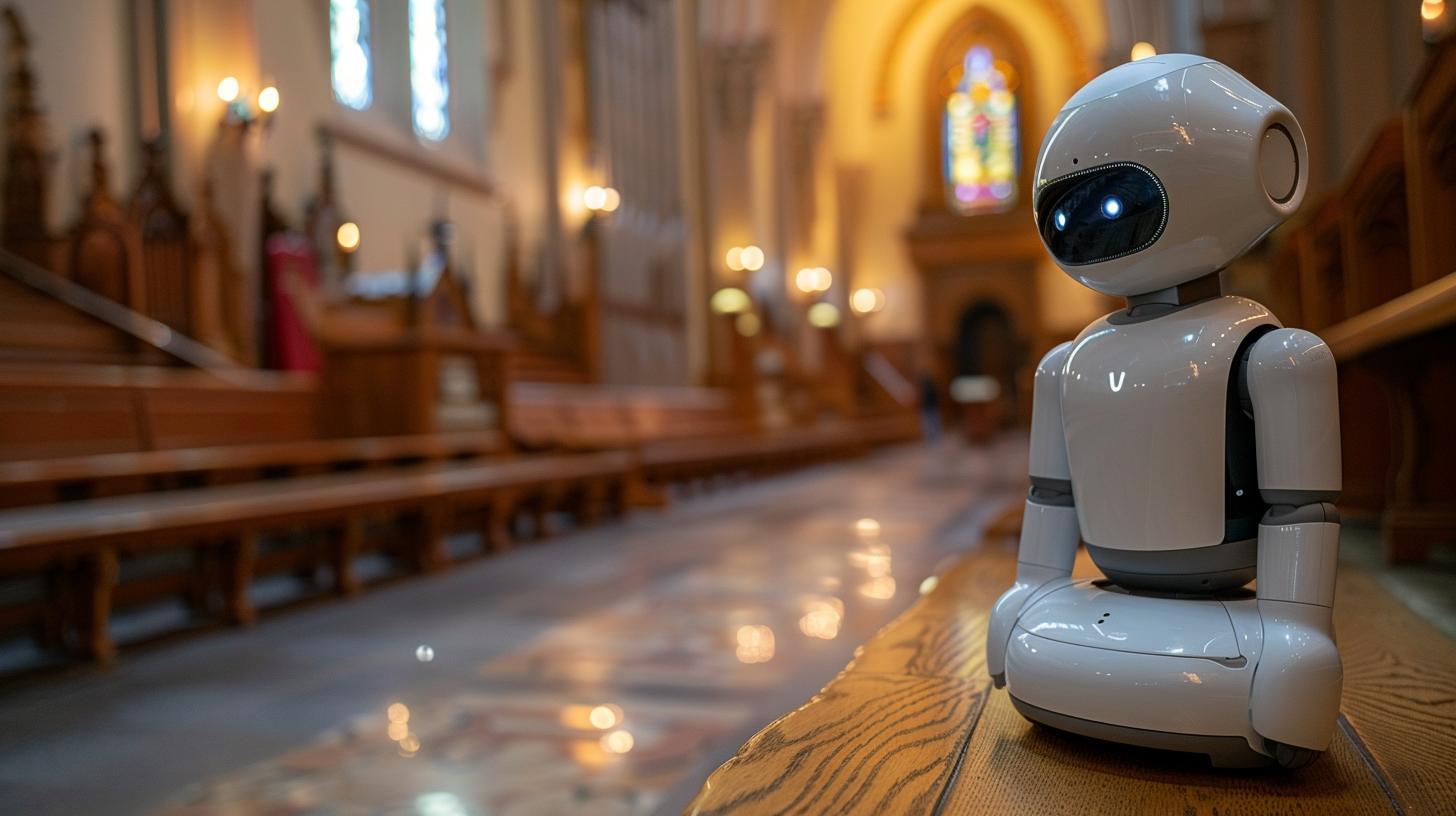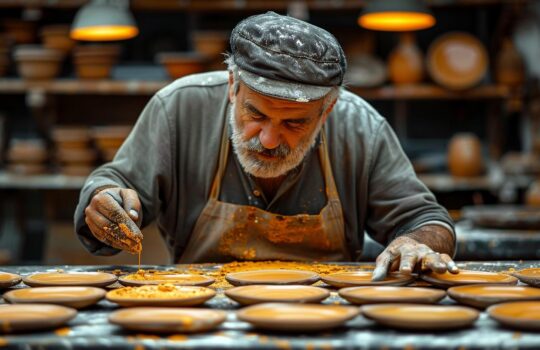The Role of Art in Preserving Jewish Heritage and Culture

Jewish heritage encompasses a vast and intricate tapestry of traditions, history, and cultural expressions. From ancient rituals to modern practices, the Jewish culture has remained vibrant and resilient through various epochs.
Art, in its multiple forms, plays a crucial role in this preservation, acting as a tangible conduit through which stories and traditions of Jewish life continue to be told. Capturing the essence of customs, beliefs, faith, and historical experiences, art helps maintain a vivid picture of Jewish identity for future generations.
The significance of art for documenting and upholding traditions cannot be overstated. By creating visual narratives that span centuries, artists have granted us access to perspectives from different eras-each with unique insights into the collective memory and values of the Jewish people. These artworks are not merely decorative objects; they are vessels carrying the weight of cultural continuity within them.
This dialogue with the past informs our understanding of both historical events and contemporary societal norms. As we prepare to delve deeper into how artistic expression has influenced-and been shaped by-Jewish heritage across time periods from antiquity to present-day society, we acknowledge the irreplaceable role that art holds in chronicling Jewish history and shaping its future narrative.
Thus unfolds an exploration into how art intertwines with life in a rich tradition esteemed for its profound contributions to human culture-a window through which we view the enduring spirit of Judaism encapsulated in brushstrokes, carvings, textiles, and architecture.
Historical Perspective
Jewish art, with its deep roots in religious tradition and cultural expression, has spanned millennia, representing a comprehensive chronicle of Jewish life and belief systems. From the intricate mosaics found in ancient synagogues to more recent European tapestries depicting biblical stories, each piece offers a glimpse into the eras they have passed through.
The oldest examples include religious artifacts such as Menorah etchings on the walls of catacombs and exquisitely illustrated manuscripts. During antiquity, the prohibitions against graven images influenced Jewish artists to focus their skill on calligraphy and embellishing texts like the Torah with elaborate motifs.
The medieval period saw Jewish art evolve within various host cultures due to widespread dispersion caused by exile and migration. In some Islamic regions, Jewish artisans embraced geometric patterns and arabesques common to Islamic art, given the shared aversion to idolatry.
However, in Christian-dominated lands, Jews adapted local artistic styles into their works while maintaining Jewish iconography and themes. For instance, illuminated Haggadot – books containing the liturgy for Passover Seder – from medieval Spain are decorated similarly to Christian manuscripts but feature scenes from Jewish history.
The Renaissance through the Enlightenment brought new freedoms and challenges for Jewish artists who now could interact more closely with broader European culture while grappling with maintaining a distinct identity. Some began to produce work less distinguishable from their non-Jewish counterparts except for subject matter.
With increasing emancipation during the modern era came participation in all arts forms-painting, sculpture, literature-and artists like Camille Pissarro and Marc Chagall gained prominence for both their universal appeal and inherently Jewish elements within their work.
| Period | Characteristics |
|---|---|
| Ancient | Mosaic synagogue floors; Illuminated manuscripts; Religious artifacts. |
| Medieval | Illuminated Haggadot; Geometric patterns reflecting regional influences (Islamic lands). |
| Renaissance/Enlightenment | Jewish artists adhering to broader artistic trends while incorporating Jewish motifs. |
| Modern/Contemporary | Broad participation across all forms of art; Notable figures such as Chagall celebrating jewish heritage. |
The profound influence of transnational movements upon cultural expressions presents numerous instances where dispersed jews contributed uniquely to their adopted societies’ visual languages-all the while perpetuating aspects of their jewish heritage artistically imbued with historical significance and personal reverence.
Types of Jewish Art and Their Cultural Significance
Jewish art is as diverse and rich as the culture from which it springs. Throughout history, Jewish artists have created a variety of works that serve not only aesthetic purposes but also religious and cultural functions. A profound respect for sacred texts has led to an enduring tradition of beautiful calligraphy within Judaism.
The Torah scrolls, with their meticulously handwritten Hebrew characters, are perhaps the crowning achievement of this art form. Here, every letter is imbued with divine significance and represents a direct connection to the Jewish faith.
- Sacred Texts and Calligraphy: The artistry involved in transcribing sacred texts extends beyond the Torah to other significant writings like the Megillah (used during Purim) and the Ketubah (the traditional marriage contract). The meticulous care given to calligraphy encapsulates a larger symbolic gesture – that of preserving heritage through painstaking devotion to detail.
- Ceremonial Artifacts: Functionality meets spirituality in many ceremonial artifacts found within Judaism. Consider items such as Kiddush cups, used during Sabbath and holiday meals to bless wine; Hanukkah menorahs, which symbolize the miracle of oil in Jewish history; or Seder plates employed during Passover to depict elements from Exodus. Each piece resonates not just with its uses in rites but also as physical touchstones linking generations through shared experience and memory.
- Tapestries and Paintings: Visual storytelling has always been an integral aspect of Jewish culture. Through tapestries, textiles and paintings recounting biblical scenes or portraying historical events, artists have disseminated stories far beyond verbal or written narratives’ boundaries. These forms of artistic expression allow communities to visualize their shared lineage – complementing oral traditions while providing individual interpretation space.
Contemporary Jewish art often includes multimedia expressions which bridge traditional subject matter with modern forms. Film, photography, digital art, and mixed media installations all contribute robustly to an evolving conversation about what constitutes Jewish art in today’s society whilst reflecting on jewish heritage. This cross-pollination serves multiple purposes: challenging existing modes of expression, engaging younger audiences who might be more distanced from conventional forms, and providing nuanced reflections on contemporary Jewish life.

Artists are continuously finding new ways to express dining room motifs in contemporary culture while at once honoring their past traditions-a delicate balance between preservation and progression creating layers upon layers within every piece produced under this umbrella term “Jewish Art.” Their work enables communities worldwide to stay connected with their roots while embracing change-ensuring that these time-honored practices remain vibrant parts of their living heritage rather than static relics consigned solely for occasional reverence.
Jewish Heritage in the Public Space
Synagogue architecture and design are much more than mere structures for communal worship; they are intrinsic to Jewish heritage, reflecting the historical context and identity of the communities that built them. Synagogues often echo architectural styles that were prominent in the regions where Jews have lived, while also incorporating unique features that adhere to religious requirements.
For example, the direction of prayer towards Jerusalem is a key element informing synagogue layout. Over time, elements such as the Ark (where Torah scrolls are kept), the bimah (the platform from which the Torah is read), and distinctive ornamental motifs have become defining features of Jewish sacred architecture.
Renowned examples include Yad Vashem in Jerusalem and the Holocaust Memorial in Berlin, each offering a narrative that conveys loss, survival, and the resilience of the human spirit. These monuments transcend their physical forms to become immersive experiences that provoke deep emotional responses and connect contemporary audiences with historical events.
Public statues and installations commemorating significant Jewish figures and events also play an essential role in maintaining a visible connection to Jewish history within broader society. They can be found across various cities around the globe, celebrating luminaries such as Maimonides or notable events like the Warsaw Ghetto Uprising.
Each piece tells a story, contributing to a larger tapestry that communicates values central to Jewish heritage-such as perseverance, faith, intellectuality, and social justice-to both Jewish communities and wider public audiences. These artistic expressions ensure that rich cultural narratives continue to resonate beyond written text or spoken word into collective memory.
Preservation and Celebration of Jewish Heritage Through Museums and Exhibitions
Museums and exhibitions play a critical role in the preservation and celebration of Jewish heritage by acting as guardians of Jewish history, culture, and art. They offer a tangible connection to the past, enabling people of all backgrounds to access and learn from a wealth of artifacts that span centuries.
These institutions meticulously care for items ranging from ancient religious texts to modern artworks, ensuring their survival for future generations. Their educational programs help contextualize the items within broader historical narratives, facilitating a deeper appreciation of the Jewish experience.
Inside museum walls, visitors encounter carefully curated exhibits that tell the stories of Jewish communities, their creativity, resilience, faith, and contributions to society. These spaces are often at the forefront of research into Jewish cultural heritage, continually contributing new insights and perspectives.
Moreover, through interactive displays and multimedia presentations-like those found in cutting-edge museums such as POLIN Museum of the History of Polish Jews or the Contemporary Jewish Museum in San Francisco-visitors engage with Jewish culture in an immersive and personal way. Temporary exhibitions also serve an essential function by highlighting specific themes or periods within Jewish history or showcasing emerging artists with new interpretations on jewish heritage.
| Museum | Location | Noteworthy Feature |
|---|---|---|
| Jewish Museum Berlin | Berlin, Germany | Architecture symbolizing aspects of Jewish history |
| Museum of Jewish Heritage | New York City, USA | Living Memorial to the Holocaust |
| POLIN Museum of the History of Polish Jews | Warsaw, Poland | Multimedia narrative exhibitions |
These institutions not only preserve but actively celebrate jewish heritage through festivals, workshops, lectures, and cultural events that draw diverse audiences. The festivals like The Festival of Jewish Culture in Kraków highlight music, film, food while lectures often delve into various aspects-from philosophical debates rooted in Judaism to discussions about contemporary global issues faced by Jews today.
By acting as centers for education and enlightenment about Judaic traditions and contemporary life alike, these museums bolster understanding amidst our multicultural world’s fabric.
Artistic Expression as a Response to Anti-Semitism and Persecution
Art has long been a potent force against oppression, serving as a means by which individuals and communities can assert their identity and resilience. Within the tapestry of Jewish history, art has often been utilized as an essential form of expression-in times of peace and prosperity as well as during periods of discrimination and persecution. Through creative endeavors, Jewish artists have documented experiences, challenged injustice, and contributed to the communal healing process.

Countering Hate Through Creativity
Visual arts, literature, cinema, theatre, and music created by Jewish artists frequently reflect on themes related to anti-Semitism and the challenges faced due to ethnic discrimination. The strength in these works lies in their capacity to humanize narratives often sidelined or misunderstood by broader society.
Artistic expressions enable visceral connections with audiences that extend beyond facts or statistics; they convey emotion and personal storylines that crystallize the impact of hate-fuelled ideologies on individuals’ lives. Pieces such as Marc Chagall’s paintings encapsulate elements of suffering but also hope-a visual metaphor for the enduring spirit within Jewish culture despite historical afflictions.
The Healing Role of Art in Jewish Communities
In response to atrocities such as the Holocaust-where art itself became a target for destruction alongside lives-the creativity emerging from those touched by this tragedy focused not only on bearing witness but also on fostering recovery. Workshops for survivor communities have used artistic processes from painting to playwriting as therapeutic tools.
These initiatives serve dual purposes: they offer solace and coping mechanisms for participants while simultaneously producing works that educate wider circles about persecution’s human toll. This therapeutic use speaks volumes about the power of art not just within public forums but in private spaces where it fulfills an intimate function in mending psychological scars.
Prominent Voices Challenging Oppression
Throughout history up until today, several significant artists have risen from adversity to forge platforms that confront prejudice through their artistry. Figures such as Roman Vishniac-renowned for his poignant photographs documenting pre-World War II Jewish life-or Arnold Schoenberg with his evocative musical compositions each took unique stances against anti-Semitic climate through their chosen mediums.
These artists distill pervasive social issues into palpable manifestations provoking thought while commemorating struggles endured by Jewish populations worldwide. The narratives within these works add depth to our understanding of resilience amidst persecution – telling poignant stories integral to preserving jewish heritage across generations.
Contemporary Jewish Artists and Their Contributions
Profiles of Notable Jewish Artists Today
The tapestry of contemporary Jewish artists is rich and diverse, with each creator bringing a unique perspective to the table. Their works are often informed by personal experiences, history, and the multifaceted nature of jewish heritage.
One such artist is Anish Kapoor, a British-Indian sculptor known for his large-scale installations that evoke contemplation on space and reality. Even though Kapoor’s work may not always explicitly reference his Jewish roots, it has been noted that his approach to voids and infinity can be seen as a metaphor for spiritual seeking inherent in Judaic tradition.
Another influential figure is Helène Aylon, an American multimedia artist who spent her life exploring feminist themes from an Orthodox Jewish background. Her art challenges traditional gender roles and religious practices and creates a narrative of liberation and self-discovery. Aylon’s work stands as a testament to the power of artistic expression in questioning and reshaping cultural norms.
Artists like these not only contribute aesthetically to the world but also use their platforms to engage in critical dialogues about identity, faith, society, and politics. Their vivid contributions continue to shape our understanding of what constitutes Jewish culture in an ever-evolving modern context.
Integrating and Reinterpreting Jewish Motifs
In recent years, there has been a noticeable trend among contemporary Jewish artists towards blending traditional symbolism with modern aesthetics. Take Yael Bartana, an Israeli artist whose videos and photographs often examine national identity through rituals steeped in irony. Bartana delves into complex themes such as Zionism while using symbolism that resonates deeply within the Jewish experience.
Similarly, Sigalit Landau uses items like salt – significant both historically for preserving food and biblically as a symbol of destruction (Lot’s wife turning into a pillar of salt) – to create sculptures that dialogue with Israel’s landscapes and narratives. Through avant-garde interpretations of motifs such as menorahs or Star of David patterns within urban and natural settings, these artists push forward the conversation surrounding jewish heritage by rooting it firmly in contemporary life.
These refined perspectives ensure that ancient symbols are not left behind but rather reinvented so they might speak more clearly to today’s audiences. This dynamic interplay between old and new encapsulates much of what makes modern-day expressions of Judaism’s rich artistic traditions so compelling.
The Global Influence of Jewish Artists
Jewish artists have undoubtedly made their mark on the international stage, influencing broad swathes of society beyond their own communities. For instance, Marc Chagall’s dreamlike works have captivated audiences worldwide with their whimsical yet poignant representations drawn from Eastern European folk culture infused with elements like floating figures that seem part biblical story depiction part surreal dreamscapes.
Meanwhile, filmmakers like Woody Allen have introduced elements from their New York-Jewish upbringing into mainstream cinema spurring discussions on existential angst intertwined with comedic narrative arcs reflective often perceived aspects typically associated New York’s intellectual elite circles during late 20th century creating popular cultural touchstones far beyond just those intimately familiar particular subculture.
Through painting film literature music many other forms creative expression contemporary artists continuing show just how integral aspect their identities forming bedrock upon which build further masterpieces keeping alive traditions whilst simultaneously ensuring new generations acquainted distant past synthesized present day context evidenced countless exhibitions forums dedicated showcasing ongoing contributions cultural landscape worldwide.

The Future of Jewish Art and Cultural Preservation
Art’s relationship with technology is evolving, and as we progress into the digital era, Jewish art faces both challenges and opportunities for cultural preservation. As more of our lives move online, so too must the efforts to maintain and disseminate Jewish heritage. Virtual galleries, 3D tours of historic synagogues, and digital archives become increasingly valuable.
These platforms can provide global access to Jewish art that was once limited by geography or physical condition. They also serve an educational purpose, introducing new generations to their rich cultural history in a format they are familiar with and excited by.
In addition to technological advancements, educational initiatives play a critical role in ensuring the future of Jewish art. Programs geared toward teaching young members of the community about their artistic heritage can spark interest and foster a sense of pride.
Workshops run by contemporary Jewish artists can bridge historical traditions with modern creativity, showing that jewish heritage is not just a relic of the past but a living, evolving culture. Educational programs in schools that cover Jewish history through its art could potentially be instrumental in nurturing an appreciation for cultural diversity among all students.
The ongoing importance of jewish heritage within our diverse world acts as a beacon amid rapid global changes. As societies blend and evolve, preserving distinct cultures like the Jewish one becomes both a responsibility and an opportunity to enrich humanity’s collective narrative. Efforts to maintain conventional methods alongside embracing new opportunities will be key.
For example, populist fears surrounding cultural dilution might be mitigated by showcasing how Jewish motifs influence contemporary art in positive ways. By foregrounding jewish heritage through these various strategies-spanning technological innovation to grassroot education-Jewish culture will not only persist but continue to thrive for future generations to admire and learn from.
Conclusion
As our exploration comes to a close, we reflect on the extraordinary journey of Jewish heritage and its inseparable bond with the arts-a relationship that has not only endured the trials of history but has thriven upon them. This unique synergy between creativity and cultural identity is evident from ancient artifacts to the innovative strokes of contemporary Jewish artists. Through each era, Jewish art has stood as a testament to survival, resilience, and profound spirituality.
The importance of engaging with and supporting Jewish art cannot be overstated. It provides a colorful tapestry that captures the multifaceted nature of Jewish life and beliefs. By appreciating this rich artistic tradition, we pass down invaluable lessons from one generation to another, while ensuring that the stories embodied within these works are neither forgotten nor lost.
Museums, galleries, educational programs, and community initiatives all play crucial roles in this ongoing process. They not only safeguard the relics of antiquity but also give space for new creative expressions that continue to redefine what it means to cherish one’s jewish heritage through modern lenses.
In conclusion, as society marches forward into an ever-evolving cultural landscape, so too does Jewish art persist in its mission-to celebrate, document, narrate and preserve an indelible cultural heritage etched into humanity’s history. It stands resilient against forgetting and opens dialogues about identity in ways words sometimes cannot capture.
For those who witness or create these works of art, each piece serves as a beacon guiding towards understanding and tolerance-keys that unlock a future where diversity is cherished for its ability to enrich rather than divide. Therefore, let us embrace this dynamic legacy with open hearts: may we all remain steadfast spectators and contributors to the enduring odyssey of Jewish cultural expression through art.
Frequently Asked Questions
How Do I Find Out if I Have Jewish Heritage?
Discovering if you have Jewish heritage can involve a combination of genealogical research, DNA testing, and exploring family traditions and histories. Begin by talking to older relatives about your family’s ancestry and any known Jewish connections.
Investigate family names, immigration documents, and historical records which may indicate Jewish origins. DNA testing through commercial services can also provide indicators of Jewish heritage, as certain genetic markers are more common among those with Jewish ancestry.
Where Are Jewish Ancestors From?
The ancestors of the Jewish people originated in the ancient Near East, primarily in the historical regions of Judea and Israel. Over millennia, Jews have migrated and settled across the globe, leading to historical populations in Europe (Ashkenazi Jews), North Africa and Iberia (Sephardic Jews), and the Middle East outside of Israel (Mizrahi Jews).
Consequently, individuals with Jewish ancestors can trace their roots back to a variety of countries depending on their specific lineage.
What Are the Two Types of Jewish Heritage?
There are two primary types of Jewish heritage: Ashkenazi and Sephardic. Ashkenazi Jews hail from Eastern Europe and initially settled along the Rhine River in Germany before spreading into Central and Eastern Europe. Sephardic Jews originate from Spain, Portugal, North Africa, and parts of the Middle East; their history includes a diaspora following their expulsion from Spain in 1492.
Why Is Jewish Heritage Important?
For many people, understanding one’s own or others’ Jewish heritage is crucial for connecting with cultural identity, religious beliefs, communal history, familial ties, as well as navigating personal experiences within broader historical contexts such as immigration or persecution narratives like the Holocaust.
Moreover, for some practicing Jews or those interested in religiously reconnecting with Judaism, having knowledge of one’s lineage holds ritual significance because Judaism traditionally passes matrilineally.
Is There a Free DNA Test for Jews?
At present, there is no widely available free DNA test specifically designed for determining whether someone has Jewish ancestry. Some organizations might occasionally offer scholarships or free tests for individuals who cannot afford them under special circumstances or as part of specific studies or projects focusing on tracing Jewish genealogy.
However researchers interested in confirming their potential Jewish heritage generally must opt for commercially available tests that require payment.





